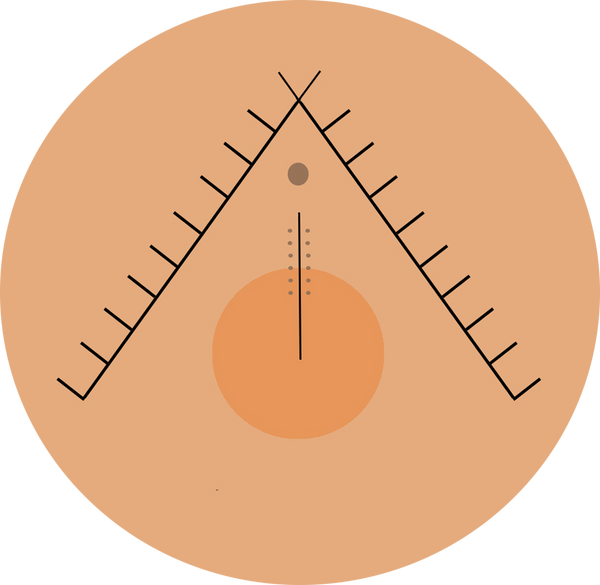
10 Fascinating Facts About the History of Moroccan Rugs
Share
10 Surprising Facts You Didn’t Know About Moroccan Rugs
Moroccan rugs are not just elegant floor coverings; they are woven stories, cultural treasures, and historical artifacts passed down through generations. With their bright colors, rich symbolism, and timeless appeal, this handmade art carries the secrets of Morocco’s heritage. In this article, we’ll explore 10 fascinating facts about the Moroccan rugs history that highlight their artistry and importance.
1. Roots in the Atlas Mountains

The Moroccan rugs historys begins in the Atlas Mountains, where Amazigh (Berber) tribes wove these textiles to provide warmth and protection from the cold. Over time, they evolved from simple functional pieces into cultural symbols representing tribal identity.
Rug-making in Morocco is an ancient craft, inherited over centuries. For hundreds of years, the original tribes have woven rugs from sheep’s wool—a practice that continues today.
2. Women as Keepers of Tradition
The history of Moroccan rugs is deeply tied to women. For centuries, Amazigh women were the main artisans, weaving their emotions and life experiences into each design. Rugs often reflected stages of life such as childhood, marriage, fertility, and motherhood.
It has always been a women’s craft. Even today, rural women produce masterpieces that are unmatched. However, these works have become increasingly expensive, especially as many women now prefer to keep their rugs or gift them rather than sell them—making authentic handwoven pieces rare to find.
3. Boujad Rugs: A Symphony of Colors
Elevate your space with a timeless, handcrafted piece that blends Moroccan artistry Purchase the rug in the photo here: Moroccan Handwoven Boujad Rug – Vintage Berber Wool & Cotton – Surcoma
Among Morocco’s many rug styles, Boujad rugs stand out with their vibrant hues—deep reds, warm pinks, and bold oranges. Handwoven with natural dyes, they often feature slightly asymmetrical patterns, which give them a unique artistic character.
4. Symbols With Hidden Meanings
Elevate your space with a timeless, handcrafted piece that blends Moroccan artistry Purchase the rug in the photo here: Handwoven Purple Wool Rug – Vintage Moroccan Amazigh Carpet | Surcoma
Moroccan rugs are not just home décor, but woven tales told through colors and symbols. Every motif carries deep meaning linked to life—whether protection, fertility, or marriage.
Colors themselves form a symbolic language: red for strength, blue for peace, and green for prosperity. Long regarded as symbols of wealth and generosity, these rugs are mostly woven by Amazigh women using sustainable methods. Whether bold or simple in design, they add warmth and history to any living space.
5. Rugs as Mirrors of Femininity
One of the most striking aspects of Moroccan rugs history is how many designs represent the cycle of womanhood. Motifs and symbols are never random: triangles or interconnected lines may symbolize virginity and purity, while interwoven patterns may represent union and marriage. Others relate to fertility, pregnancy, and childbirth, symbolizing renewal of life.
In this way, each rug becomes a symbolic autobiography of its weaver—reflecting her emotions, hopes, and personal experiences. At the same time, it embodies the collective vision of Amazigh women as symbols of life and continuity.

6. Tribal Diversity Creates Richness
The diversity of Moroccan tribes has always been a source of richness in rug-making. Each tribe developed its own colors, motifs, and weaving techniques, turning Moroccan rugs into a cultural mosaic.
Boujad rugs are known for their bright colors and feminine fertility symbols; Rehamna rugs for their bold motifs and warm hues; beni Ourain for their simple, harmonious patterns; while Azilal rugs stand out with deeply symbolic and spiritual designs.
This diversity makes every rug unique. Even rugs woven in the same region differ, each carrying the identity of its tribe, the story of its weaver, and the spirit of the place it was born.
7. Ancient Techniques Still Alive

Despite modern influences, many Moroccan weavers remain faithful to ancient methods:
Hand-spinning wool
Using natural plant-based dyes
Meticulous hand-knotting
These methods preserve authenticity and ensure durability, with rugs often lasting for decades.
8. Rugs as Dowries and Heirlooms

Moroccan rug history is closely tied to family traditions. Rugs were an essential part of a bride’s dowry, symbolizing wealth, fertility, and protection in her new home.
They were not merely decorative objects but treasures carrying deep meaning—representing continuity of lineage, fertility, and family prosperity. Over time, rugs became emotional heirlooms, passed from mothers to daughters, embodying the family’s memory and artistry.
9. From Villages to Global Fame

The Moroccan rugs history rugs began in Amazigh villages and Arab towns, where they were woven for local use. By the 20th century, however, their unmatched quality and designs caught the attention of international designers and art lovers. Today, Moroccan rugs are a staple of bohemian, minimalist, and luxury interiors worldwide.
10. Beyond Decoration: Spiritual Protection
In traditional Moroccan culture, rugs were seen as more than decoration. They were believed to act as spiritual barriers against negative energies threatening the family.
The carefully woven geometric motifs carried spiritual intentions, serving as silent charms to protect the home. Rugs were also associated with prosperity and blessings, often placed in central living spaces—especially guest rooms—to reflect hospitality and abundance.
Conclusion: Moroccan Rugs as Living History
Weaving a Moroccan rug requires immense effort and time. Wool must first be collected from mountain sheep and carefully cleaned—a process that takes weeks. It is then dyed with natural pigments before women begin spinning and weaving it into stunning geometric patterns, inspired either by imagination or traditional inherited designs.
This painstaking process explains why authentic Moroccan rugs are so highly valued. They are not just floor coverings but woven archives of culture, spirit, and creativity. Whether it’s the colorful Boujad rugs or the minimalist Beni Ourain, each piece represents a fragment of Morocco’s timeless heritage.
For more details on Moroccan rugs history and their many styles, you can read this Wikipedia.


